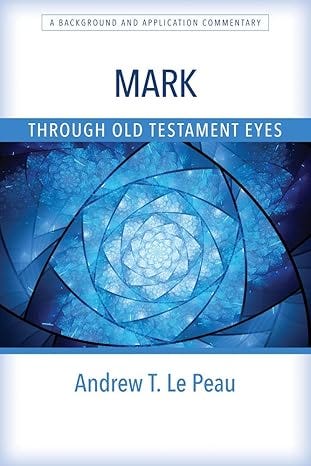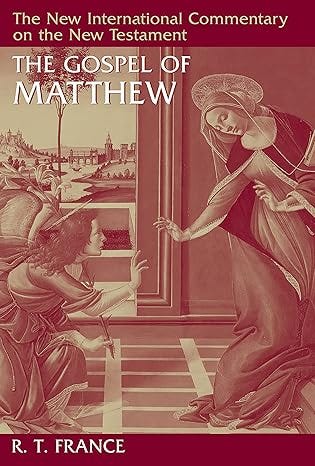Why I Don't Believe in a Future Great Tribulation
Seven reasons to rethink the Great Tribulation, Armageddon, and the end of the world

If you have read my previous post on why I no longer believe in a secret rapture, you know that re-examining the timeline I grew up with has been both liberating and unsettling. When you pull that thread, you discover it is connected to more than the rapture. Other things start to unravel. Avoiding this unraveling, some people who have left dispensationalism still hold on to one big piece of that framework: the idea of a final, worst-ever, global Great Tribulation that will bring the world to the brink before Jesus returns to rescue the faithful.
I no longer believe in that final great tribulation, not as it is usually described, seven years long, ruled by a literal Antichrist, culminating in Armageddon, and positioned as either just before or just after Jesus swoops in to save Christians from the worst of it. And just like the rapture, the main proof text for this belief is usually the same: Jesus’ Olivet Discourse.
In what follows I want to offer seven reasons I no longer hold to that picture of a future great tribulation. Along the way I will point to the verses and to several scholars who have helped me see the texts more clearly.
1. Jesus was not answering, “When will you return?”
Matthew records: “Now as He sat on the Mount of Olives, the disciples came to Him privately, saying, ‘Tell us, when will these things be? And what will be the sign of Your coming, and of the end of the age?’” (Matt 24:3 NKJV). Notice they did not ask, “When will you come back after being gone?” They had just heard Him predict the Temple’s destruction (Matt 24:1–2), and they connected that event with the end of the age. The temple was destroyed circa 70 AD after a brutal Roman occupation of Jerusalem.
So what exactly were the disciples wanting a sign for? The Greek word used for “coming” is parousia, which in the Greco-Roman world meant the royal arrival or official visit of a king or dignitary. It did not mean a return or a coming back. It meant the formal, visible arrival of someone already in authority, often to a city already under their rule (Matt 24:3, 27, 37, 39). Even Jesus’ brothers once pressed Him to go to Judea and “show Yourself to the world” (John 7:3–4 NKJV), language of public manifestation. So here, on the Mount of Olives, the disciples too want a sign that will verify what they already believe: that the Messiah has come and is present. Now they wanted to see him rule. In their minds, that probably looked like a political uprising or a resurgence of Jewish nationalism as a reaction to Roman occupation. Instead, Jesus tells them that everything they want to fight for — the Temple, the city, Zion— will be destroyed. That, He says, is the sign of His coming. His instructions are pastoral and practical: “...then let those who are in Judea flee to the mountains. Let him who is on the housetop not go down to take anything out of his house. And let him who is in the field not go back to get his clothes” (Matt 24:15–18 NKJV; cf. Luke 21:20–21).
N.T. Wright and other scholars like R. T. France and Dale Allison emphasize that in Jesus’ context, the destruction of the Temple would be seen as the divine sign that Israel’s God had acted decisively, vindicating His Messiah. In prophetic symbolism, the collapse of Jerusalem’s central institution meant the transfer of authority from the old order to the reign of the Son of Man. This “coming” is not about leaving heaven to return to earth, but about being enthroned as King and Judge. It was The Parousia.
Three connections make this clear: First, in Jewish prophetic literature, the “day of the Lord” is often described in cosmic imagery when a city or empire falls (Isaiah 13; Amos 8). Second, Jesus directly ties the sign of the coming of Son of Man to the Temple’s downfall (Matt 24:29–31), echoing Daniel 7’s vision of one like a son of man receiving dominion after judgment on the beasts. Third, the early church, living through and after 70 AD, understood the Temple’s destruction as proof that Jesus’ warnings were true and His authority unmatched.
2. “Great tribulation” is hyperbolic first-century language for Jerusalem’s fall.
Jesus continues: “For then there will be great tribulation, such as has not been since the beginning of the world until this time, no, nor ever shall be” (Matt 24:21 NKJV). He is not speaking in isolation here. He is drawing from the rich prophetic tradition where hyperbolic language is used to shock hearers into action. Joel described a locust plague as “like nothing has ever happened, nor will be again” (Joel 2:2). Daniel spoke of “a time of trouble, such as never was since there was a nation” (Dan 12:1 NKJV). During the Maccabean period, 1 Maccabees 9:27 laments that “there had not been such great distress in Israel since the time prophets ceased to appear.”
The Dead Sea Scrolls’ War Scroll uses similar language: “a time of distress for all the people redeemed by God… nothing to equal it from its beginning until it end in final redemption” (1QM 1:11–12). This text comes from the Essene community at Qumran, a separatist Jewish sect that believed they were the true remnant of Israel. They anticipated a climactic, divinely orchestrated war between the “Sons of Light” (themselves) and the “Sons of Darkness” (both Roman occupiers and corrupt Jewish leaders). In their vision, this war would purge evil from the land, restore proper worship, and usher in God’s kingdom. Their use of “nothing to equal it” shows that hyperbolic “worst-ever” phrasing was already common in apocalyptic literature of the time. The Essenes’ expectation matters here because it shows that many first-century Jews assumed redemption would arrive through violent upheaval. By echoing this familiar language, Jesus was speaking in a way His listeners would recognize, but He applied it to a very different reality: the imminent Roman siege of Jerusalem, not a final cosmic battle. His urgent warning to flee was a direct reversal of the Essene impulse to gather for war.
But doesn't "great tribulation" distinguish this as the worst suffering ever? R. T. France explains, “These are stock expressions for unparalleled suffering, and are not to be pressed literally (e.g., by asking whether the Holocaust was worse than the Jewish War).” As LaPeau notes, “This is a way of emphasizing the magnitude of the trouble and is not intended literally… Rather, both phrases emphasize how severe the time of trouble and destruction are to be.” In other words, you can’t pit suffering against suffering. There is no scale for such comparisons, and for those who experience it, every season of destruction feels like the end of the world to those going through it.
The destruction Jesus warned about was indeed severe. In 70 AD, Roman legions surrounded Jerusalem during Passover, trapping hundreds of thousands inside. Josephus, the first-century historian, records famine so extreme that some resorted to cannibalism. The siege ended with the Temple burned, the city razed, and survivors slaughtered or captured. For those living through it, there had never been anything like it, and Jesus’ urgent warning to “flee to the mountains” was literal survival advice.
His words, “great tribulation,” are not an encoded reference to a distant, end-of-the-world cataclysm. They are a pastoral alarm for His generation to take decisive action before it was too late. And “greatest” does not mean “final.” If someone objects that “nor ever shall be” implies history’s end, Luke’s account challenges that: “And Jerusalem will be trampled by Gentiles until the times of the Gentiles are fulfilled” (Luke 21:24 NKJV). That anticipates ongoing history after the catastrophe
3. The seven year timetable is dispensational math, not an explicit New Testament teaching.
The notion of a seven-year tribulation is built from a particular reading of Daniel’s seventy weeks (Dan 9:24–27). In that scheme the seventieth week is detached from the first sixty nine, placed at the end of history, and connected to Matthew 24. The New Testament never says that the great tribulation lasts seven years. The length is imported from an interpretive construction. Many non-dispensational scholars read Daniel 9 as culminating in Christ’s ministry, covenant, and the events surrounding the first century.
4. Antichrist, False Prophet, and Two Witnesses are symbolic, not future tribulation figures
If the “great tribulation” Jesus described was about events in the first century, then we should read the so-called characters of the apocalypse in that light. The term “antichrist” appears only in John’s letters (1 John 2:18, 22; 4:3; 2 John 7), where it is already active in his own time, describing any denial of Christ and His teaching. The beasts and false prophet in Revelation draw on Daniel’s visions to portray oppressive empires and corrupt religious systems; all realities his first readers would have recognized in Rome’s political and cultic machinery. The two witnesses are patterned on Moses and Elijah, representing the Church’s prophetic witness in the face of persecution. By lifting these figures out of their historical and symbolic framework and turning them into a lineup of future end-time heroes and villains, we lose the rich, layered critique John is making of imperial power, idolatry, and the call for faithful witness in every age.
5. Armageddon is a gathering, not a battle
Revelation 16:16 says the kings of the earth are “gathered… to the place called in Hebrew, Armageddon.” The name refers to the ancient site of Megiddo, a real location in northern Israel overlooking the Jezreel Valley. Throughout history, Megiddo was a strategic choke point for armies traveling the Via Maris, the trade and military route linking Egypt with Mesopotamia. Many decisive battles were fought there, from Pharaoh Thutmose III’s victory in the 15th century BC, to Josiah’s death at the hands of Pharaoh Neco (2 Kings 23:29).
Because of this long association with climactic conflict, Megiddo became a symbol of decisive confrontation in Jewish memory. In Revelation, Armageddon functions as a symbolic “place” where the world’s powers gather for their final stand against God. But the text never describes an actual battle there. In fact, when the confrontation comes in Revelation 19, the opposition is defeated instantly “by the sword” from Christ’s mouth, a symbol of His word, not through drawn-out combat. The location’s history gives weight to the image, but the vision is theological, not a prediction that this exact patch of land will host a literal final world war.
6. Christians are called to endure, not escape
Following Jesus was never meant to be a strategy for avoiding pain. He told His disciples plainly, “If anyone desires to come after Me, let him deny himself, and take up his cross daily, and follow Me” (Luke 9:23 NKJV). This is the Via Dolorosa, “he way of the cross,” the shape of every true pursuit of God and justice. It is not the removal of hardship but the transformation of hardship into holy witness.
Jesus prepared His followers for this: “A servant is not greater than his master. If they persecuted Me, they will also persecute you” (John 15:20 NKJV). The early church lived this reality. Paul told believers in Lystra, “We must through many tribulations enter the kingdom of God” (Acts 14:22 NKJV). He wrote to Timothy, “Yes, and all who desire to live godly in Christ Jesus will suffer persecution” (2 Tim. 3:12 NKJV). To the church in Smyrna, the risen Christ said, “Be faithful until death, and I will give you the crown of life” (Rev. 2:10 NKJV).
The Christian life is not designed for escape from the world’s pain, but for faithful witness in the midst of it. Our calling is cruciform, It is shaped by the cross, which means we willingly stand in solidarity with those who suffer, bearing our own trials with patience, humility, and hope. The world’s powers may gather their armies and its systems may crumble, but the way of Jesus is to love, serve, and endure to the end.
7. Revelation’s vision is pastoral, not a disaster forecast
This cruciform calling brings us to the heart of Revelation. The book was not given to scare the church into hiding, but to strengthen it for witness. John identifies himself at the outset as “your brother and companion in the tribulation” (Rev. 1:9 NKJV). He writes not as a distant predictor of doom, but as a fellow sufferer, offering the church a vision of the Lamb who reigns. The Lion of Judah is revealed as “a Lamb as though it had been slain” (Rev. 5:6 NKJV), teaching us that the victory of God comes not by force, but through the apparent weakness of sacrificial love.
Early Christian tradition remembers John, in his old age, being carried into the assembly and saying only, “Little children, love one another.” In Revelation, that love takes the form of courageous faithfulness under pressure. It is a call to see through the illusions of empire and violence, and to recognize that the true power in the universe is the Lamb who conquers by laying down His life. The vision is not a timetable for escape, but a summons to live as people marked by the cross until the kingdoms of this world become the kingdom of our Lord and of His Christ (Rev. 11:15 NKJV).
The Olivet Discourse and Revelation aren’t roadmaps to help us dodge some future cosmic catastrophe. They are calls to live faithfully in the face of whatever trials our generation meets. Jesus’ words about “great tribulation” were not about a day we might one day escape, but about a day His first followers had to face head-on, and a way of being that every disciple since has been called to embrace.
The cross-shaped life doesn’t ask how to get out of the fight, but how to love in the midst of it. It doesn’t measure one era’s suffering against another, because suffering cannot be measured against suffering. It looks to the Lamb, who walks with us through every ending and promises that one day, “God will wipe away every tear from their eyes; there shall be no more death, nor sorrow, nor crying” (Rev. 21:4 NKJV).
Until that day, we follow Him, not away from the world’s pain, but into it.
Special shout out to my friend J.M. Smith for his wonderful teachings on this subject which can be found on Youtube:





Future?
https://substack.com/@stevenberger/note/c-145188017